One of the easiest ways to polish your drawings to a professional level is to take a little extra time and protect your lines.
This is going to be especially important in areas of high contrast (such as the side of the face against a dark background) …
… places where different textures touch, and lines that are perfectly straight, such as manufactured objects.
There are three ways to make perfect, clean lines. You can tape them, score them, or erase them with an eraser sheild.
Each method has benefits and drawbacks, and those will dictate the best time to use them.
Taping works best for straight lines and slight curves, unless you can protect
the entire shape.
Masking tape works well as far as keeping the paper clean while you draw and blend over the top, but because it’s thick, it has an edge that you’ll have to outline.
Also, it’s very sticky and you always risk tearing your paper when you use it.
Because of that, you need to stick the tape to your clothing a few times before you put it on the paper.
Better than tape (but significantly more expensive) is frisket film, which is just like tape, but thinner and less sticky. You can use it to protect lines, curves, or shapes, and it comes attached to a backing that is somewhat transparent, so you can even trace lines through it and cut out the exact shape that’s needed.
Drawbacks to frisket film are that it can be frustrating and time-consuming to use, because you have to cut out every shape, peel the backing off, and carefully line it up on the paper without letting the frisket film stick to itself.
Because of this, it works best for small areas and shapes that aren’t too complex. Keep in mind that you can also cut stencils from frisket, so you can protect either the shape, or everything but the shape.
Scoring lines is very fast and handy, but if you make a mistake, it’s nearly impossible to fix. For this technique, use a blunt stylus (something with a fine tip that won’t tear the paper) and indent the paper wherever you want white lines.
The deeper you indent, the more certain you can be that those lines will stay white regardless of how dark your graphite or charcoal becomes.
Once the lines are scored, you can go right over the top and even blend the tone without worrying about losing them.
This is really handy for fine lines, flyaway hairs, lettering (if it’s small), and tiny details like button holes and the like. The drawback is that it’s hard to undo a line once it’s scored, and it will be visible when you tilt the paper to the light.
Also, it will only create lines that as as thick as your stylus, and it can be hard to see where you’ve already scored, so it’s easy to make a mistake, especially if you’re trying to make something look very precise.
Finally, you can use an eraser shield to get clean white lines. This is especially handy if you want to take a line out of a solid shape.
On the heart example, look at the difference beween the upper line, which was taken out using an eraser shield, and the lower line, which was just erased.
Want To Learn More…

So many would-be artist’s overlook this vital foundation when they begin learning to draw. So from there they became disheartened, loose interest and put it in the “too hard” basket.
If you are a quick learner then great but some of us will take a little longer to pick up the required knowledge.
This isn’t a problem. In fact, when you do master it, because you had to work a little harder, you often have a more thorough grasp of the basics.
With that said we have created ‘Photorealistic Portraits’ which builds on your drawing knowledge to take your portrait drawings further.



